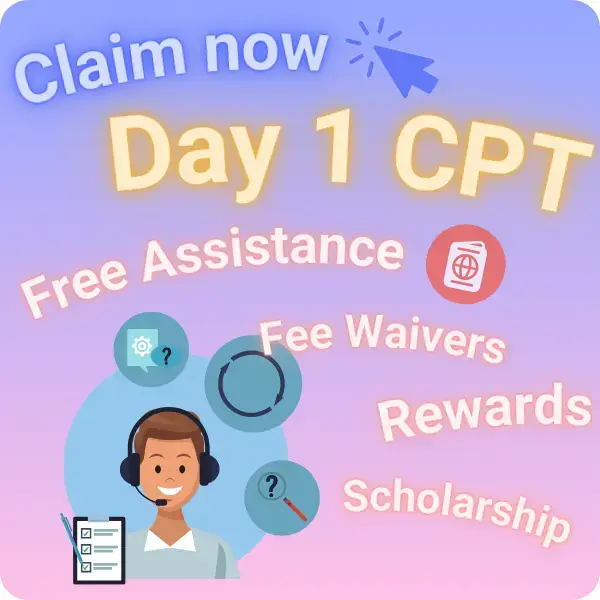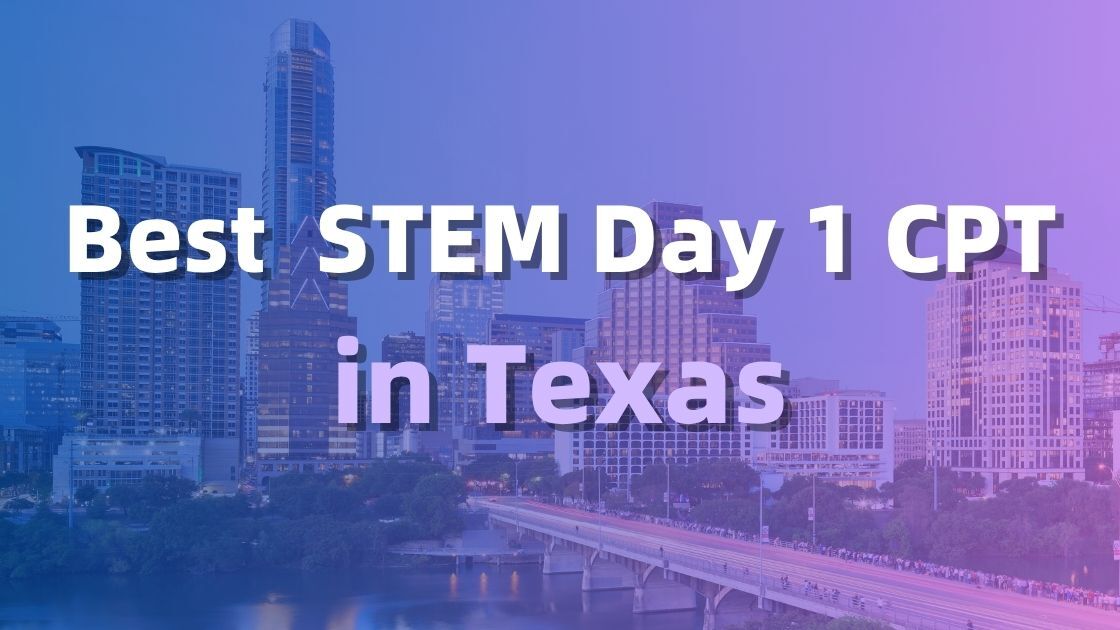Share this
H1B RFE Explained: Common Reasons and Effective Solutions
by Abby on Sep 18, 2023
Receiving an H-1B RFE (Request for Evidence) can be a daunting experience, but it's crucial to understand the common reasons behind them and how to respond effectively. In this blog post, we'll break down the common causes of RFEs, provide strategies to address them and offer insights into navigating potential pitfalls. If you've received an RFE and are mainly on Day 1 CPT, this guide will help you.
Table of Contents
-
-
Specialty Occupation
-
Maintenance of Status
-
Employer-Employee Relationship
-
Availability of Work (On-site)
-
Licensure Requirements
-
Company Address /VIBE
-
LCA Corresponds to Petition
-
Availability of Work (Off-site)
-

Part 1:Common causes for H-1B RFE
Decoding H-1B RFE If you're one of the lucky ones who made it to the H-1B program this year, have you received an RFE? Wondering if this year's RFEs are more challenging? Well, there's a possibility they might be. If the voluntary withdrawal rate of applicants after the initial lottery round falls below the estimated 33%, USCIS (U.S. Citizenship and Immigration Services) may increase RFE denials to manage the final number of approvals.
So, if you receive an RFE, it's crucial not to rely solely on your company's attorney to handle it. An unsuccessful RFE response is often due to inadequate attorney support, so you must actively participate in the process. Let's summarize the common reasons for receiving an RFE, their underlying causes, and how to address them:
1. Specialty Occupation:
This is perhaps the most common and complex reason for H-1B RFEs, especially for students from non-STEM backgrounds. To address this, you must prove that your job qualifies as a "specialty occupation." Key factors include your educational background, industry standards, company job requirements, and the unique complexity of your role.
💡 Strategy: Expert Opinion Letter Consider submitting an Expert Opinion Letter to demonstrate that your role qualifies as a specialty occupation from an industry expert's perspective. Highlight the uniqueness and complexity of your job, emphasizing your irreplaceable contributions.
2. Maintenance of Status:
USCIS may scrutinize whether your F-1 visa, including CPT (Curricular Practical Training) and OPT (Optional Practical Training), was used legally and appropriately during your academic program.
💡Strategy: Gather Evidence Collect detailed documentation during your CPT period (see Part 2 for specifics). When responding to the RFE, provide a clear timeline, job descriptions, and the relevance of your coursework to your work experience.
3. Employer-Employee Relationship:
USCIS may question whether you are genuinely an employee of the sponsoring company.
💡 Strategy: Provide Documentation Submit employment contracts and evidence demonstrating your employer's management and supervision of your work.
4. Beneficiary Qualifications:
If your degree program or work experience is too broad, you may face this scrutiny, often combined with the specialty occupation issue.
💡Strategy: Research and Document Thoroughly analyze your coursework and work experience to prove your qualifications for the job. Consider an Expert Opinion Letter if this issue overlaps with the specialty occupation.
5. Availability of Work (On-site):
USCIS may question whether the company genuinely needs the position and if it can provide sufficient work to keep you employed for three years.
💡 Strategy: Gather Business Documentation Compile the company's business plans, information on other employees in similar positions, and evidence of ongoing business operations to demonstrate the necessity of your role.
6. Licensure Requirements:
Certain professions like engineering, accounting, or architecture may require licenses. USCIS may inquire about your licensing status.
💡 Strategy: Obtain Required Licenses If your profession requires licensing, ensure you have the necessary credentials.
7. Company Address /VIBE:
This is often a simple and quickly resolved RFE triggered by outdated company information in USCIS databases.
💡 Strategy: Submit Updated Information Provide updated company information to resolve this issue.
8. LCA Corresponds to Petition:
Ensure that the information on the Labor Condition Application (LCA), such as job category, salary level, and company address, matches your H-1B petition.
💡 Strategy: Submit Matching Information If there are discrepancies, provide explanations and submit the necessary corrections.
9. Availability of Work (Off-site):
This is a common issue for foreign employees working off-site, often encountered by outsourced IT professionals.
💡 Strategy: Collaborate with Attorney If you face this issue, work closely with your attorney and company to gather substantial evidence, demonstrate long-term collaboration, and outline the company's work arrangement plan for you.
Part 2: What to do if received RFE while using Day 1 CPT
Day 1 CPT and RFE RFEs may seem straightforward in their reasoning, but the documentation requirements can be extensive. Preparing in advance is essential, even before receiving the physical RFE notice. Here's a checklist of documents to gather:
👉 Request from Your School:
-
Official RFE Support Letter
-
Attendance Records
-
CPT Agreement Copy
-
Enrollment Verification
-
Official Transcripts
-
Academic Records
-
Tuition Records
👉 Request from Your Employer:
-
Internship Salary Information
-
Detailed Job Description
-
Offer Letter
-
Ensure accurate reporting of part-time work that is full-time.
👉 Personal Documentation:
-
All your I-20 forms
-
Records of attendance, such as transport receipts, parking tickets, flight or train tickets, or any school-related expenses.
-
Course syllabi, handouts, and program descriptions from the school's official website.
-
Homework samples, study plans, and study notes.
-
Correspondence related to course information from your school email.
-
Address verification (utility bills, bank statements, lease agreements, etc.).

Part 3:Pitfalls to avoid when dealing with RFEs
⚠️ Gap Between CPT and Two Degrees: If you have a gap between two degrees and are on CPT, it's crucial to be aware that during this period, you must either be unemployed or in an unpaid position. You should not receive any paychecks during this gap. While you don't need to mention this explicitly in your response to an RFE, be prepared to provide evidence if asked to prove that you did not receive any paychecks during this time.
⚠️ Timeline from Online Status Change to Receiving Physical RFE: Typically, it takes about 10 days for the status change from online to RFE and receive the physical RFE notice. If you haven't received it within this time frame, following up with USCIS is advisable.
⚠️ Active Participation in RFE Response: When responding to an RFE, it's essential to participate and communicate with your attorney actively. Many small to mid-sized companies allow attorneys to share the RFE content with you and even involve you in preparing RFE materials. While only H-1B applicants (i.e., employers) can file appeals, it doesn't mean you should remain passive. Many unsuccessful RFE responses can be attributed to inadequate attorney support, so if you can participate, do so.
⚠️ Processing Time for RFE Response: The processing time for RFE responses can vary and may sometimes take several months. During this period, you can usually continue with your regular employment. Don't decline the job offer or wait passively. Suppose your application is ultimately denied, and you've already started working. In that case, you will need to be removed from the company's payroll, and you can refile your H-1B application 60 days after the denial. This period is counted as unemployment.
⚠️ Premium Processing (PP) Option: Whether to choose premium processing (PP) should be discussed thoroughly with your attorney. Sometimes, opting for PP can change the reviewing officer, potentially resulting in a new round of RFEs if the initial materials were deemed insufficient. Therefore, carefully analyze the requirements provided in the physical RFE notice.
⚠️ Avoid Travel During RFE Appeal: It's advisable to avoid international travel during the RFE appeal process, as there can be risks involved. Any travel-related issues or complications may impact your appeal process.
⚠️ Understanding RFE Appeals: An appeal does not automatically grant the beneficiary legal status, suspend the execution of the original decision, or extend the original removal date. Therefore, if the beneficiary lacks legal status to remain in the United States during the proposed motion to reopen, motion to reconsider, or appeal period, there could be issues related to unlawful presence.
⚠️ Tracking Case Progress: To monitor the approval and RFE data changes, you can look for the USCIS Case Progress Tracker on GitHub.
Remember, dealing with H-1B RFEs can be complex, but being well-prepared and actively engaged can significantly improve your chances of a successful outcome. Always consult with an experienced immigration attorney for personalized guidance.

Conclusion
Dealing with an H-1B RFE can be challenging. Still, with careful preparation and a clear understanding of this article's common issues and strategies, you can increase your chances of a successful response. Proactive preparation is the key to navigating the complex H-1B process. Good luck!
If your H1B application gets denied or revoked, studying in one of our partner Day 1 CPT Universities might be one of your options to continue your journey in the United States.
➡️ Click here to schedule a meeting with one of our application counselors.
Share this
- Day 1 CPT (32)
- H1B (24)
- Day 1 CPT Universities (17)
- H1B Lottery (11)
- CPT (6)
- Green card (5)
- University Application (4)
- F1 (3)
- F1 Status (3)
- International Students (3)
- USCIS (3)
- Concordia University Texas (2)
- F1 Reinstatement (2)
- H1B Layoff (2)
- H1B Status (2)
- OPT (2)
- STEM OPT (2)
- Westcliff University (2)
- change of status (2)
- Bay Atlantic University (1)
- Curry College (1)
- English Proficiency (1)
- Goldey-Beacom College (1)
- Green Card Application (1)
- H4 EAD (1)
- H4 Visa (1)
- Humphreys University (1)
- Immigration (1)
- International Student Travel (1)
- Jobs (1)
- L1 (1)
- Layoff (1)
- McDaniel University (1)
- O1 (1)
- Saint Peter's University (1)
- Salem University (1)
- Scholarships (1)
- Tax (1)
- November 2025 (2)
- October 2025 (1)
- September 2025 (3)
- August 2025 (2)
- June 2025 (1)
- May 2025 (2)
- March 2025 (2)
- November 2024 (2)
- October 2024 (4)
- September 2024 (3)
- August 2024 (3)
- July 2024 (2)
- June 2024 (7)
- May 2024 (3)
- April 2024 (4)
- March 2024 (3)
- February 2024 (5)
- January 2024 (1)
- October 2023 (3)
- September 2023 (6)
- August 2023 (10)
- July 2023 (3)
- June 2023 (4)
- May 2023 (1)
- April 2023 (1)
- February 2023 (1)
- November 2022 (1)
- October 2022 (3)
- September 2022 (1)
- August 2022 (1)

Full Day 1 CPT Universities List
Click here to view 30+ Day 1 CPT universities in different states
Scholarships & Payment Plan
Click here to explore extensive scholarships and financial aids
Get Free Assistance Now
We can help you with admission, fee waiver, and scholarships
Featured Articles
Studying and Working in the US
-Nov-22-2025-12-02-59-3078-AM.jpg)
Which Day 1 CPT Programs Offer a Fixed Summer Break? You Won’t Believe How Rare the Answer Is…

Why Curry College is a Top Choice of Day 1 CPT in Boston

Concordia University Texas Launches New MCS Program - A Top STEM Day 1 CPT Option
-Sep-20-2025-01-14-14-5002-AM.jpg)
H-1B “$100,000 Entry Fee” Rule Explained — What It Means for F1 and OPT Students and What To Do Now





.png?width=204&height=68&name=Verified%20(2).png)


.png?width=250&height=83&name=Logo%20-%20Rectangle%20(2).png)
.png?width=250&height=83&name=Logo%20-%20Rectangle%20(1).png)
